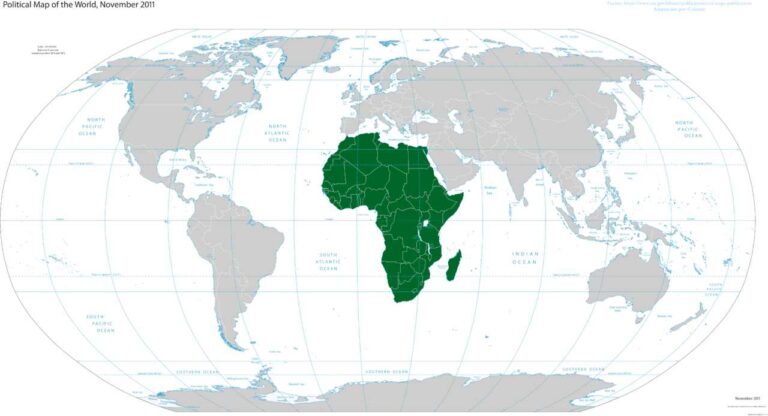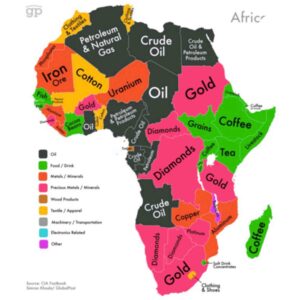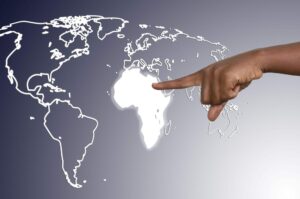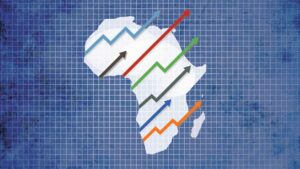Top 10 largest countries in Africa

Africa is a continent made up of the most nations on earth. The continent is bragged to be the world’s wealthiest in terms of natural resources. Africa is home to some very powerful and large countries and also home to some of the world’s smallest nations. The continent is the largest in the world, with an area of 30.37 million square kilometres.
This article lists the top ten largest nations on the African continent.
Africa’s largest countries
| Rank | Country | Area |
|---|---|---|
| 1. | Algeria | 2,381,740 km2 |
| 2. | Democratic Republic of Congo | 2,345,410 km2 |
| 3. | Sudan | 1,861,484 km2 |
| 4. | Libya | 1,759,540 km2 |
| 5. | Chad | 1,284,000 km2 |
| 6. | Niger | 1,267,000 km2 |
| 7. | Angola | 1,246,700 km2 |
| 8. | Mali | 1,240,000 km2 |
| 9. | South Africa | 1,219,912 km2 |
| 10. | Ethiopia | 1,127,127 km2 |
1. Algeria
Area: 2,381,740 square kilometres
Algeria is a north African country situated on the Mediterranean coast along the Sahara desert to its south. The country has a population of 45,502,000 people on a land area of 2,381,740 square kilometres and has a population density of 18 people per square kilometre.
The north African country is more than 5% of the total African land area and is the world’s 10th largest nation. Algeria’s economy is largely influenced by petroleum, the country has a high human development index (HDI) of 0.745, an GDP per capita of $4,151 and a GDP of $187.155 billion.
Recommended: 10 Smallest countries in Africa
2. Democratic Republic of Congo (DRC)
Area: 2,345,410 square kilometres
The DRC is a central African nation also known as DR Congo, the Congo or Congo-Kinshasa, which is often used to differentiate the nation from the Congo (Congo-Brazaville). the country lies in the centre of the African continent, is the 2nd largest nation in Africa and the 11th largest in the world. The DRC has a population of over 100 million people living on a land area of 2,345,410 square kilometres and a population density of 40 persons per square kilometre.
The DRC has a low HDI of 0.479, a GDP per capita of $669 and a GDP of $61.800 billion. The DRC is nonetheless one of the world’s richest countries in terms of resources.
3. Sudan
Area: 1,861,484 square kilometres
Sudan is a northeast African country sharing borders to its southwest with the Central African Republic, and the red sea to its east, which is the only waterway for the nation. Sudan has a population of 47,958,856 people living in a land area of 1,861,484 square kilometres with a population density of 21.3 persons per square kilometre.
The economy of Sudan has been at its poorest over the years, following a series of military coups and political instability. The Sudanese HDI is low at 0.508 with a per capita of $674 and an economy of $30.808 billion as of 2022.
4. Libya
Area: 1,759,540 square kilometres
Yet another north African country, Libya has the Mediterranean sea bordering its north, Sudan at its east and Niger to its south. The north African nation has a population of 7,054,493 people living in a land area of over one million with some of the world’s lowest population density of 3.74 persons per square kilometre, being the 4th largest country on the African continent.
The economy of Libya is influenced by petroleum, with a high HDI of 0.718, a GDP per capita of $6,391 and an economy of $43.750 billion.
5. Chad
Area: 1,284,000 square kilometres
Chad is the fifth largest nation on the African continent. The country is a landlocked country located in the north-central region of Africa. Nonetheless, the country is situated close to the famous lake Chad, which serves as a marine body for the nation. Chad has a population of 17,963,211 people and is the 67th most populated nation on the planet. The country also has a land area of over one million square kilometres and a population density of 8.6 persons per square kilometre.
Chad has a low HDI of 0.394, one of the lowest on the planet with a per capita income of $890 and an economy of $11 billion.
6. Niger
Area: 1,267,000 square kilometres
Niger is the largest country in the west African region. The country is a landlocked nation bordered to the north by the Sahara, the south by Nigeria, the east by Chad and the west by Burkina Faso and the Benin Republic. Niger has a population of 24,484,587 people living in an area of 1,267,000 square kilometres and having a population density of 12.1 persons per square kilometre.
Niger has an extremely low HDI of 0.400, a per capita of $510 and a GDP of $9.869 billion.
Also read: 10 Least populated countries in Africa
7. Angola
Area: 1,246,700 square kilometres
Angola is the largest southern African nation made up of varying tropical beaches facing the Atlantic ocean. Angola has a total population of 34,795,287 people on a land area of 1,246,700 with a population density of 24.97 persons per square kilometre.
Angola’s economy has improved drastically following over a decade of civil war, the country’s GDP per capita is $3,793 with a GDP of $125.496 billion, being one of Africa’s largest economies. The country’s principal trade is petroleum and services, which accounts for over 30% of the Angolan GDP. The country is also one of the continent’s biggest oil-producing countries with a HDI of 0.581.
8. Mali
Area: 1,240,000 square kilometres
Mali is the second largest nation in west Africa after Niger. Just like Niger, Mali is a landlocked nation with a total land area of I,240,000, being the eighth largest country in Africa. Mali has a population of 21,473,764 people with a population density of 11.7 persons per square kilometre.
Mali has a relatively young population, with a majority of its population being under the age of 25. The country has a $17.407 billion economy and a per capita of $891 with a HDI of 0.428.
9. South Africa
Area: 1,219,912 square kilometres
South Africa is located in the southernmost of the continent and is the 9th largest country in Africa with a land area of over 1 million square kilometres. The country has a population of over 60 million people with a population density of 42.4 persons per square kilometre.
South Africa has a growing economy and a per capita of $6,979 with an economy of $419 billion. The country also has a high HDI of 0.713.
10. Ethiopia
Area: 1,127,127 square kilometres
Ethiopia is a landlocked country located in the horn of Africa in east Africa. The country has a population of over 100 million people with a density of 92.7 persons per square kilometre.
The country has an economy of $122.591 billion, a per capita of $1,040 and a low HDI of 0.485.
Recommended: 10 Largest cities in Africa
Conclusion
The largest countries in Africa have strongly utilized resources around them for increased growth. This work listed the largest African nations in terms of size.
Also read: 10 Largest economies in Africa
Don't miss a thing. Follow us on Telegram and Follow us on WhatsApp. If you love videos then also Subscribe to our YouTube Channel. We are on Twitter as MakeMoneyDotNG.




